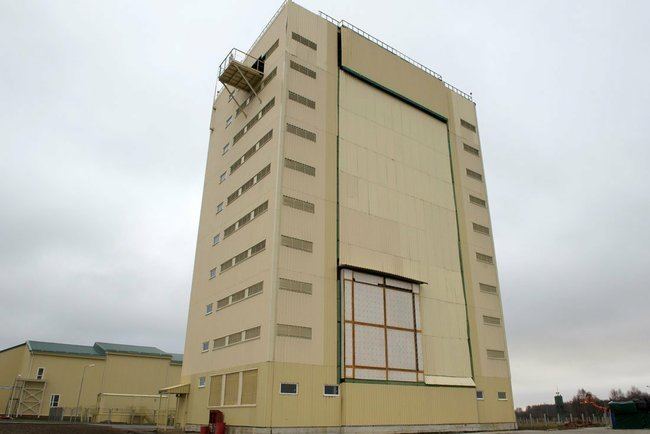Range Up to 10,000 km | Introduced 2009 | |
 | ||
No. built 7 operational in 2016, others planned Frequency Voronezh-M: 150–200 MHz (VHF)Voronezh-DM: 0.1 m wavelength (UHF) | ||
Voronezh radars (Russian: Воронеж) are the current generation of Russian early-warning radar, providing long distance monitoring of airspace against ballistic missile attack and aircraft monitoring. The first radar, in Lekhtusi near St Petersburg, became operational in 2009. There is a plan to replace older radars with the Voronezh by 2020.
Contents
Their common name follows the pattern of Soviet radars in being named after a river, the Voronezh. The previous generation of radar was known as the Daryal (after Darial Gorge), Volga (after Volga River) and Daugava (Daugava River) and the generation before the Dnepr (Dnieper River), and Dnestr (Dniester River).
The Voronezh radars are described as highly prefabricated meaning that they have a set up time of months rather than years and need fewer personnel than previous generations. They are also modular so that a radar can be brought into (partial) operation whilst being incomplete.
Russia has used the launch of these new radars to raise its concerns about US missile defence in Europe. At the launch of the Kaliningrad radar in November 2011 Russian President Dmitry Medvedev was quoted as saying "I expect that this step [the launch of the radar] will be seen by our partners as the first signal of our country's readiness to make an adequate response to the threats which the missile shield poses for our strategic nuclear forces."
Types
All types are phased array radar.
A Voronezh-M is claimed to cost 2.85 billion rubles and a Voronezh-DM 4.3 billion rubles. This compares to the 5 billion ruble cost of a Dnepr and 19.8 billion rubles for a Daryal, at current prices. Voronezh systems are manufactured at the Saransk Television Plant.
Their designers, Sergey Boev (RTI), Sergey Saprykin (NIIDAR), and Valeriy Karasev (RTI Mints), were jointly awarded the 2011 State Prize for Science and Technology for their work on the Voronezh.
Installations
The first radar, a Voronezh-M, was built in Lekhtusi near St Petersburg. It entered testing in 2005 and was declared "combat ready" in 2012. It is adjacent to the A. Mozhaysky Military Space Academy, which is an officer training centre for the Aerospace Defence Forces. It is described as filling the early warning gap caused by the closure of the radar station at Skrunda in Latvia in 1998, although the Volga radar in Hantsavichy, Belarus, has also been described as doing this, and as a UHF radar the Volga has a different resolution from the VHF Voronezh-M.
The second radar is at Armavir in southern Russia on the site of Baronovsky Airfield. It is a Voronezh-DM, a UHF radar and was announced as replacing the coverage lost when the Dnestr radars in Sevastopol and Mukachevo, Ukraine, were closed in 2009. There are actually two radars at this site, the first one covers the south west and could replace the Ukrainian radars. The second one facing south east and could replace the Daryal radar in Gabala that closed at the end of 2012.
The third radar is to the south of Pionersky in Kaliningrad, on the site of Dunayevka airfield. It is another UHF Voronezh-DM and is surrounded by countries that are now in NATO. There is only one radar here and it is fully operational in 2014.
A radar was built at Mishelevka in Irkutsk on the site of the former, and never operational, Daryal radar which was demolished in 2011. The radar is a Voronezh-VP and is sited close to the former Daryal transmitter building. This radar covers the south and can replace one of the two Dnepr radars at that site. Another Voronezh-VP array was planned which gives 240 degrees coverage and this is ready by 2014.
It is planned to build a Voronezh-VP radar at Pechora in 2015 to replace the Daryal there. Similarly a Voronezh-VP is planned for Olenegorsk in 2017 to replace the Dnepr/Daugava. As part of the public negotiations over the future of Gabala Radar Station it had been suggested that the Daryal there could be replaced by a Voronezh-VP in 2017, although the station closed at the end of 2012 instead.
Work started on the station at Barnaul in 2013, other locations announced are Omsk, Yeniseysk and Orenburg.
